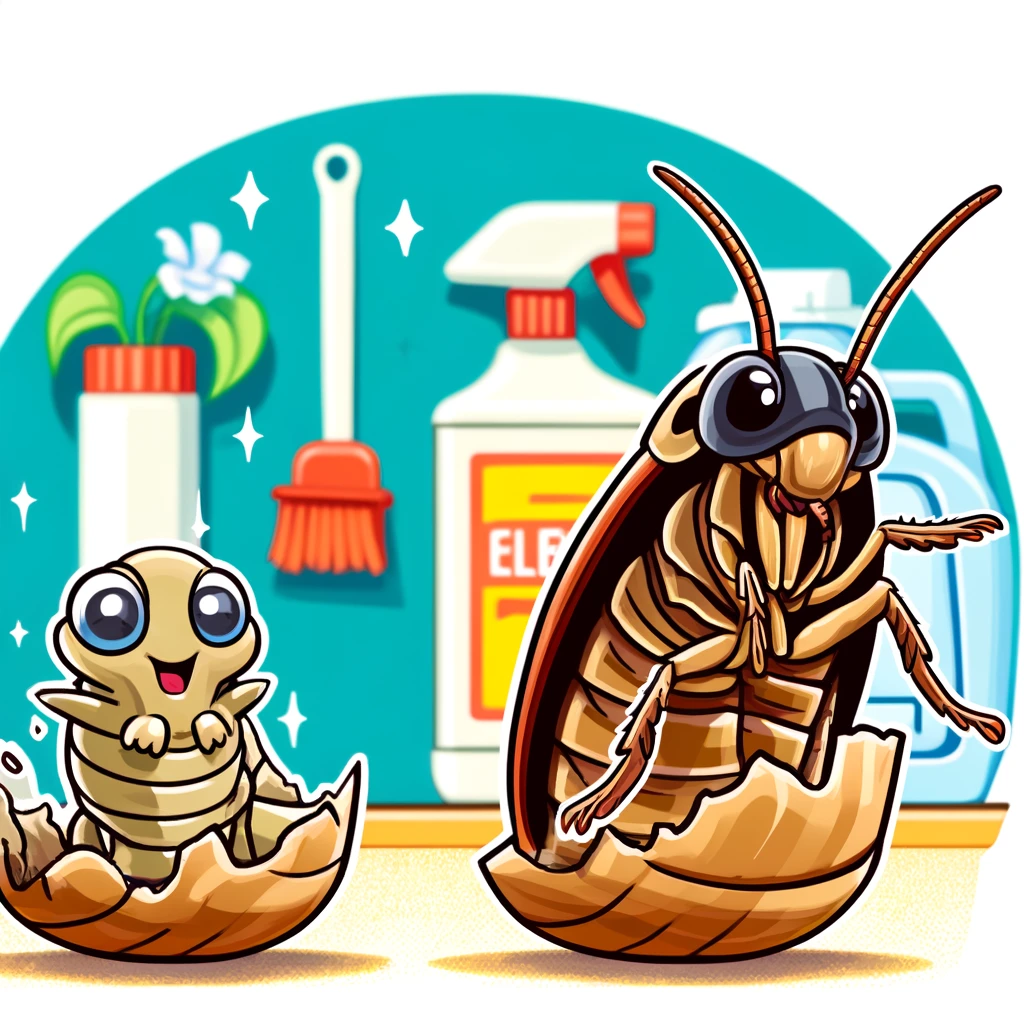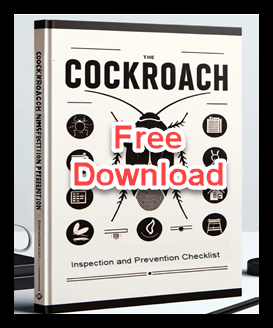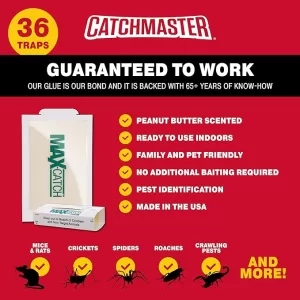Why Do Cockroaches Shed Their Skin?
 Cockroaches are resilient pests that can adapt to various environments, making them difficult to control. One intriguing aspect of their biology is their ability to shed their skin. In this article, we’ll explore why and how cockroaches shed their skin, the stages of their life cycle, and what this process means for pest control.
Cockroaches are resilient pests that can adapt to various environments, making them difficult to control. One intriguing aspect of their biology is their ability to shed their skin. In this article, we’ll explore why and how cockroaches shed their skin, the stages of their life cycle, and what this process means for pest control.
The Molting Process
What is Molting?
Molting, or ecdysis, is the process by which cockroaches shed their exoskeleton to grow. Unlike mammals that grow continuously, insects like cockroaches have a rigid exoskeleton that doesn’t expand. To accommodate their growing bodies, they must periodically shed this outer layer and form a new, larger one.
Why Do Cockroaches Shed Their Skin?
Growth
The primary reason cockroaches shed their skin is to grow. Each time they molt, they emerge larger and closer to their adult size.
Developmental Stages
Cockroaches undergo several developmental stages called instars. Each stage involves molting and results in a slightly larger and more developed cockroach. This process continues until they reach adulthood.
The Molting Process in Detail
Stages of Molting
- Premolt Stage
- The cockroach prepares for molting by absorbing water and swelling, which helps split the old exoskeleton.
- Ecdysis
- The actual shedding of the exoskeleton. The cockroach wriggles out of its old skin, emerging soft and pale.
- Postmolt Stage
- The new exoskeleton hardens and darkens. During this time, the cockroach is vulnerable to predators and environmental hazards.
Frequency of Molting
Cockroaches molt several times throughout their nymph stage. The number of molts varies by species but typically ranges from 5 to 7 times before they reach maturity.
Identifying Molted Skins
Appearance
Molted cockroach skins, or exuviae, are typically transparent or light brown and retain the shape of the cockroach, including legs and antennae. Finding these skins in your home is a clear sign of an infestation.
Common Locations
- Kitchens: Behind appliances and inside cabinets.
- Bathrooms: Around sinks and bathtubs.
- Basements: In dark, damp areas.
Implications for Pest Control
Signs of Infestation
Molted skins indicate active cockroach populations. If you find these in your home, it’s essential to take immediate action to prevent the infestation from worsening.
Increased Allergen Levels
Cockroach skins, along with feces and saliva, contribute to indoor allergens. These can trigger asthma and allergies, particularly in children.
Targeting Vulnerable Stages
During molting, cockroaches are more vulnerable. Pest control efforts that target these stages can be more effective. Using growth regulators and insecticides during these periods can help reduce cockroach populations.
How to Control Cockroach Infestations
Sanitation
- Keep It Clean: Regularly clean kitchens and bathrooms, focusing on removing food crumbs and spills.
- Proper Food Storage: Store food in airtight containers and promptly dispose of garbage.
Eliminate Hiding Spots
- Seal Cracks and Gaps: Use caulk or other sealants to close off entry points.
- Reduce Clutter: Remove unnecessary items that can serve as hiding spots.
Moisture Control
- Fix Leaks: Repair any leaky faucets or pipes.
- Use Dehumidifiers: Lower humidity levels in damp areas.
Chemical Controls
- Baits and Traps: Place cockroach baits and traps in strategic locations.
- Insecticides: Use insecticidal sprays or dusts in cracks, crevices, and other areas where cockroaches hide.
Professional Pest Control
For severe infestations, professional pest control services can provide comprehensive inspections and targeted treatments.
Yes, cockroaches do shed their skin, and understanding this process is crucial for effective pest management. By recognizing the signs of molting and taking appropriate control measures, you can keep your home free of these resilient pests.
Stay vigilant in your efforts to control cockroaches. Regularly inspect your home for signs of molting and other indicators of infestation, and take proactive steps to maintain a clean and pest-free environment. If you need assistance, don’t hesitate to contact professional pest control services for expert help.
- The Life Span of a Cockroach
- Do Cockroaches Eat Clothes?
- Do Cockroaches Have Teeth?
- Shrimps and Cockroaches
- Will Sleeping with the Light On Keep Cockroaches Away?
- How to get roaches out of your car overnight
- Do Cockroaches Feel Pain?
- How Many Legs Do Cockroaches Have?
- Comparing Cockroach Eggs Size for Different Types of Cockroaches
- Identifying a Cockroach Bite on the Lips or Face
- Black Water Bug Identification and Control
- Why Do Water Bugs Come Out At Night?
- What Does Roach Rash Look Like?
- Can Cockroaches Bite Your Eyelid?
- Can Cockroaches Live in Your Balls?
- How did cockroaches get their name?
- Why Do Cockroaches Shed Their Skin?
- What Smell do Palmetto Bugs Hate?
- Baby Palmetto Bug: Identification and Control
- Cockroach Eggs vs Poop: How to Tell the Difference
- How to Get Rid of Water Bugs
- How Long Can a Cockroach Live Without Air?
- The Lifecycle of the German Cockroach: From Egg to Adult
- Do Mice Eat Roaches
- Wood Roach vs. Cockroach

